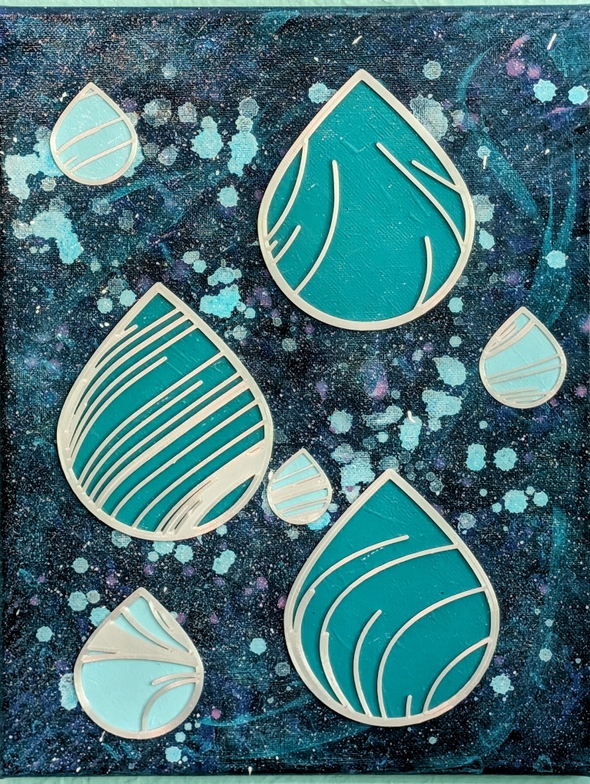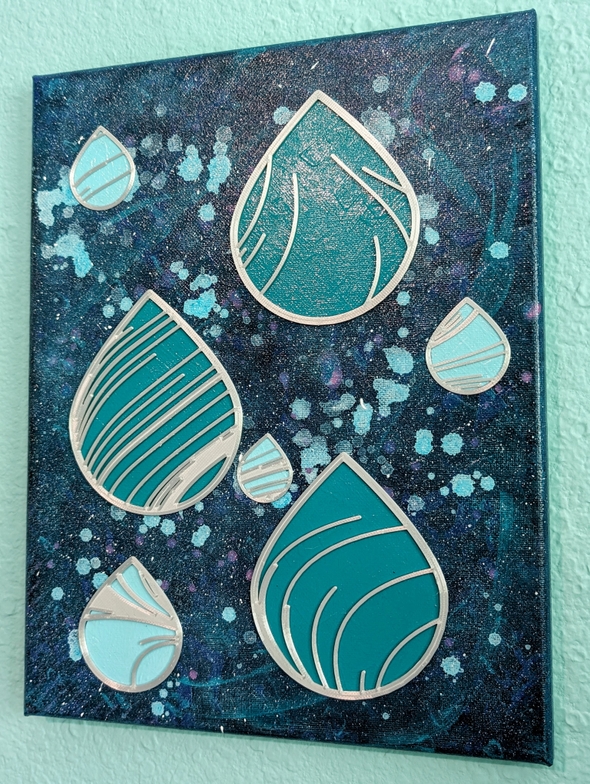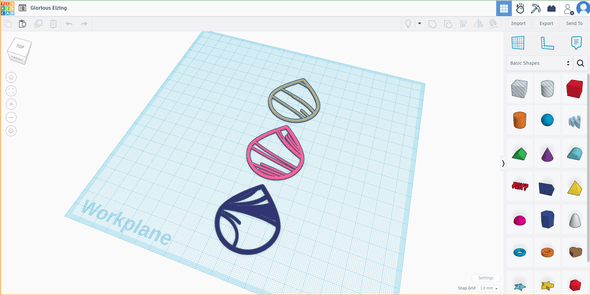I started painting again
I don't love how this painting turned out, but I enjoyed every moment of creating it.
(I did the best I could on the photography with a tripod, my phone, and my office lights.)
I absolutely adore how the background turned out, and I'm sure I'll use some of those techniques in the future (texturing with paper, diluted paint splatter). However, I don't love how the really experimental parts turned out. The 3D printing didn't come out quite how I envisioned, and the smaller drops, added to cover some "happy little accidents", feel like too much.
Why I paint
I enjoy painting mostly because it's something I've been doing since childhood. Growing up, there was an almost endless supply of craft paints and things to paint on, whether it was canvas, wood, or ceramic.
While I love creating digital art, I feel like I can mentally work myself into a frenzy as I'm coding. Ideas snowball into more ideas, and I can spend hours traveling down different avenues trying to create cool effects.
With paint, everything slows down. The time between idea and execution is much longer. While acrylic paint dries quickly, it's best to give layers ample time to dry. You also have to settle on the best idea and commit to it. The only undo is repainting and starting over again.
The background of this piece took well over a day to complete. There were a few paint-overs when I didn't like an effect, but in general, I painted over with diluted paint, so the past "mistakes" could still show through and give character to the painting.
A different kind of problem-solving
You probably don't think about problem-solving when creating art, but I feel like I'm constantly problem-solving when I'm painting. How do I get the effect I'm going for? What's the best way to mask part of this painting? Should I go mixed-media or just paint traditionally?
One of the problems I came across in this painting was that the tops of my 3D printed elements looked much worse than the bottoms. The simple fix was to flip the 3D printed pieces so the bottoms were now the tops. In hindsight, I probably should've taken the extra time to flip the pieces in the slicer and try printing the bottom layer with different patterns to see which I liked the best.
I also encountered a problem with a big white glob of paint dripping right into the center of the canvas. I hid the blob with the small drop, but now I just can't stop thinking about how it doesn't look right. Sometimes, the best solution is to take the time to redo it right.
Adventures in mixed media
Adding 3D elements to paintings has been something I've wanted to do for a long time. The last time I painted, which has to be over six months ago, I was trying to use 3D prints as stencils, but they haven't been a great stencil material for me, at least on canvas. A smoother surface like wood might yield better results.
Instead, I've been thinking about using 3D printing to emphasize geometric elements in my paintings, as well as to introduce some generative features. In this painting, I used some existing code to generate flow fields, saved the one I liked the most, then used Inkscape to "cut out" the drop shapes. Then, I used Tinkercad to create the extruded designs.
The process is similar to my older post, 3D printing generative art with P5.js and Blender, but instead of using Blender I've found that Tinkercad can be much faster and easier to work with for simple extruded designs. The code that I used for that earlier blog post is the same that I used for this painting, with a few changes.
Thoughts for future paintings
- I'm looking into fancy specialty filaments and build plates for the 3D printed elements, specifically holographic build plates.
- I like the ModPodge finish and the way that I painted it on. The X-shaped texture really looks great in person.
- I want to experiment more with different ways to affix the 3D printed pieces to the canvas. I used ModPodge to glue the pieces on, but I'm thinking of other ways, like pins, thread, and even magnets.
- More geometry. I really like bold, simple geometric art. It's surprisingly hard to make good, simple, geometric art without it looking too basic.
- More color! I really need to get better at mixing large amounts of colors and more mindfully mixing colors to achieve the effect I want.


